Saludos a todos los amantes de las manualidades, hoy les comparto el proceso para estampar una camiseta con la técnica de serigrafía casera, esta es una de la artes gráficas que más me gusta por el valor artesanal que tiene, actualmente las estampas realizadas por medio de las máquinas de sublimado están muy de moda, están representan rapidez, bajos costo, nitidez en las imágenes, algo que conviene mucho a la producción en masa, sin embargo, la Serigrafía le da un valor agregado a las prendas que no tiene comparación, esto es el valor de lo hecho mano, espero les guste.
Greetings to all lovers of crafts, today I share with you the process to print a t-shirt with the homemade screen printing technique, this is one of the graphic arts that I like the most because of the artisanal value it has, currently the prints made by means of Sublimation machines are very fashionable, they represent speed, low cost, sharpness in images, something that is very convenient for mass production, however, Screen Printing gives an added value to garments that has no comparison, this It is the value of what is handmade, I hope you like it.


Materiales/ Materials
- Bastidor de madera
- Tachuelas o chinches
- Tela llamada dopiovelo
- Lámina de acetato, puede ser reciclada de una radiografía
- Tijera
- Cuter
- Dibujo en una hoja de papel acorde al tamaño del bastidor
- Pintura a base de agua para Serigrafía, en mi país se llama aguaprint
- Una espátula o algo que cumpla su la función de espátula, yo uso un pedazo de goma espuma
- Cuchara de plástico
- cinta adhesiva
- Lámina de cartón o madera del tamaño de la camiseta
- Camiseta de algodón
- wooden frame
- Tacks or thumbtacks
- Fabric called dopiovelo
- Acetate sheet, can be recycled from an x-ray
- scissors
- Cuter
- Drawing on a sheet of paper according to the size of the frame
- Water-based paint for screen printing, in my country it is called aguaprint
- A spatula or something that fulfills its function as a spatula, I use a piece of foam rubber
- plastic spoon
- adhesive tape
- Sheet of cardboard or wood the size of the t-shirt
- Cotton T-shirt

Paso 1 / Step 1
Lo primero es armar el bastidor, para ello cortamos la tela de dopiovelo del tamaño suficiente para cubrir el bastidor de madera, la idea es ir asegurando la tela con las tachuelas o chinches, de manera que quede tensada la tela sin ninguna arruga.
The first thing is to assemble the frame, for this we cut the dopiovelo fabric of sufficient size to cover the wooden frame, the idea is to secure the fabric with tacks or thumbtacks, so that the fabric is stretched without any wrinkles.
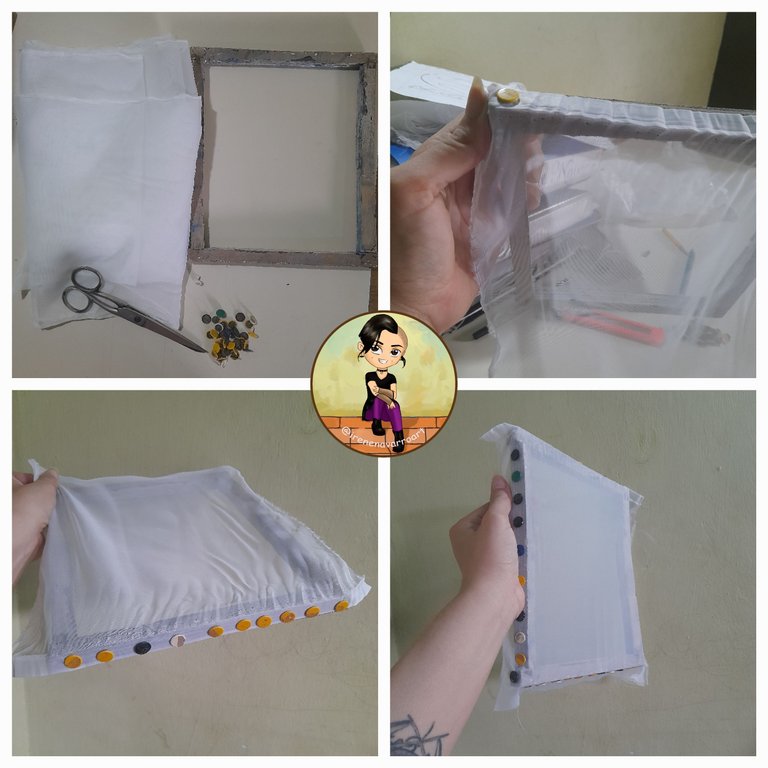
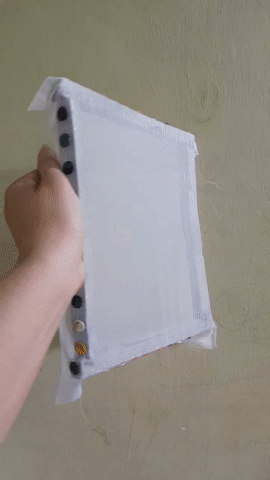

Paso 2 / Step 2
Lo siguiente es cortar el acetato del tamaño del bastidor, colocar el dibujo debajo del acetato y con el cúter cortar cada parte del diseño, luego pegar el acetato al bastidor con cinta adhesiva solo por los bordes, las piezas pequeñas o flotantes, tales como los ojos y la nariz, se pegan con cinta directamente a la tela. Hay que tener mucho cuidado en invertir el diseño como un espejo, para que este quede correcto al estampar
The next thing is to cut the acetate to the size of the frame, place the drawing under the acetate and with the cutter cut each part of the design, then tape the acetate to the frame with adhesive tape only by the edges, the small or floating pieces, such as the eyes and nose, are taped directly to the fabric. You have to be very careful to invert the design like a mirror, so that it is correct when stamping
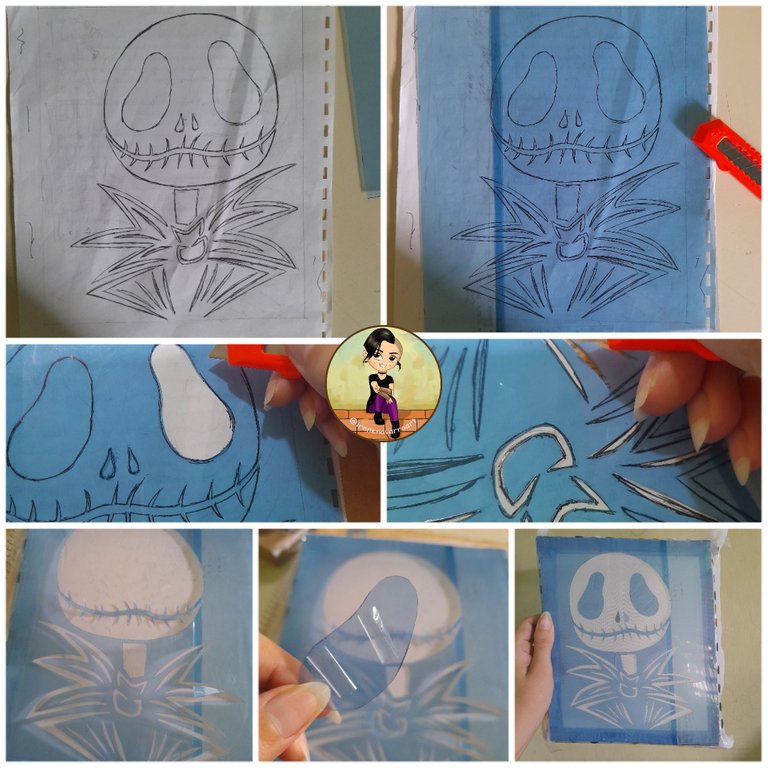

Paso 3 / Step 3
Colocar la camiseta en el cartón, luego ubicar el bastidor a unos centímetros del cuello de la camiseta, estado depende del tamaño de la camiseta y también a gusto de cada quien si desea su estampado más abajo o arriba. Colocar con la cuchara una cantidad de pintura de un lado del bastidor, luego con la espátula en un ángulo menor de 90 ° esparcir la pintura, procurar que al pintura cubra todos los espacios abiertos del diseño y también que el bastidor no se mueva, luego retirar el bastidor con mucho cuidado. Yo tenía mucho que no estampada así que me quedaron algunas pequeñas irregularidades pero la práctica hace al maestro y se que esta técnica funciona muy bien porque antes solía hacerlo seguido y los resultados eran casi perfectos, así que no tengan miedo de poner en práctica la Serigrafía casera.
Place the shirt on the cardboard, then place the frame a few centimeters from the neck of the shirt, state depends on the size of the shirt and also to the taste of each person if you want your print lower or higher. Place with the spoon a quantity of paint on one side of the frame, then with the spatula at an angle less than 90 ° spread the paint, ensure that the paint covers all the open spaces of the design and also that the frame does not move, then carefully remove the frame. I had a lot that was not printed so I had some small irregularities but practice makes perfect and I know that this technique works very well because before I used to do it often and the results were almost perfect, so don't be afraid to put Screen Printing into practice homemade.
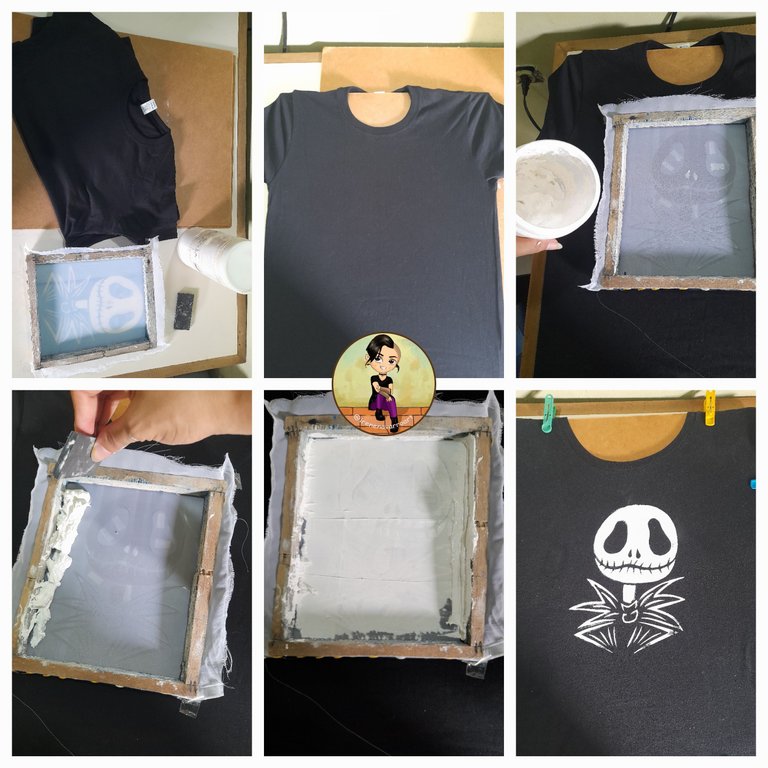

Resultado / Result
Con esto se pueden estampar unas tres camisetas de una sola vez luego si desean seguir estampando pueden lavar de inmediato el bastidor , esta pintura seca rápido así que no se puede dejar el bastidor sucio por muchos minutos porque la secarse la pintura tapará los poros de la tela y entonces no será posible reutilizar el mismo, sin embargo, fácilmente está tela podría utilizarse varias veces si se lava rápido. En la serigrafía profesional usan pinturas llamadas plastisol, estas no secan tan rápido así que pueden usar el mismo bastidor para grandes cantidades de camisetas y además dividir los bastidores por colores, pero el plastisol seca solo si le pones una pistola de calor o un horno especial para las camisetas que generalmente está integrado en la estación de estampado. Pero con la serigrafía casera que les he mostrado hoy se pueden hacer muchas cosas divertidas y es una manera especial de estampar camisetas únicas para la familia, tal como mi hijo y yo nos preparamos para Halloween con estas camisetas de Jack Skellington
With this you can print about three t-shirts at once, then if you want to continue printing you can immediately wash the frame, this paint dries quickly so you can't leave the frame dirty for many minutes because the drying of the paint will cover the pores of the fabric and then it will not be possible to reuse it, however, this fabric could easily be used several times if it is washed quickly. In professional screen printing they use paints called plastisol, these do not dry as fast so they can use the same frame for large quantities of t-shirts and also divide the frames by colors, but the plastisol dries only if you put a heat gun or a special oven on it for t-shirts it is usually built into the printing station. But with the homemade screen printing that I have shown you today you can do many fun things and it is a special way to print unique t-shirts for the family, just like my son and I prepare for Halloween with these Jack Skellington t-shirts
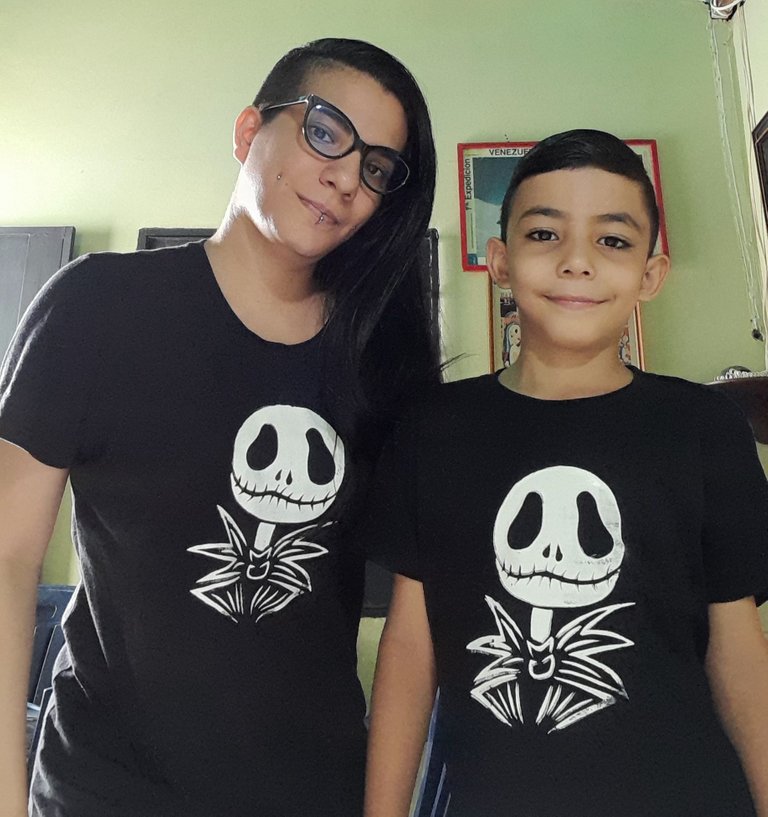

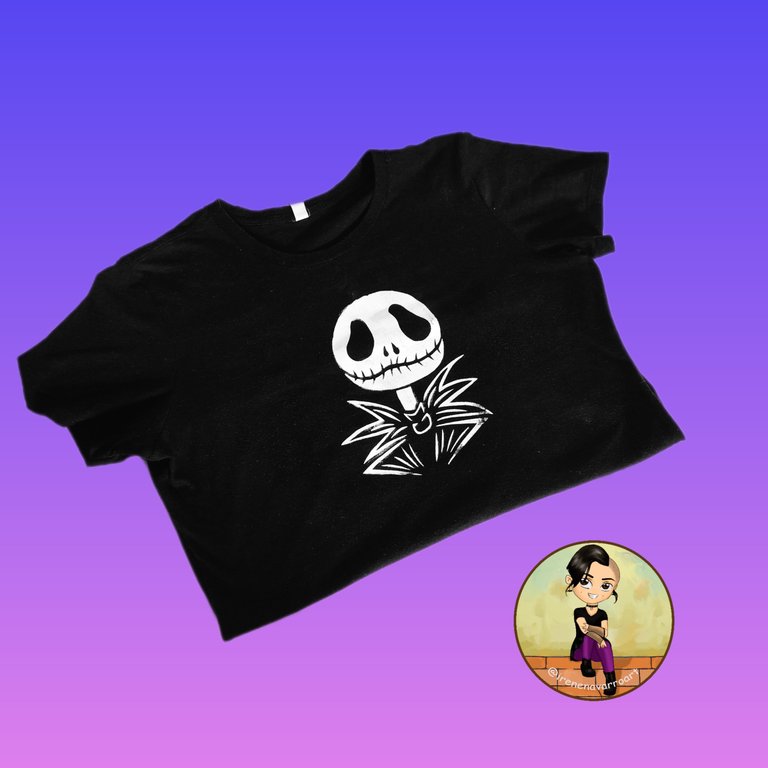

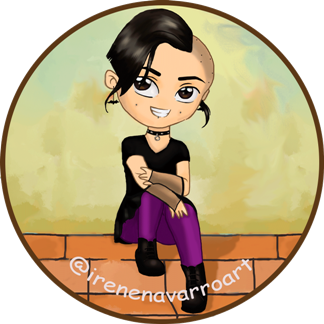
Espero les haya gustado. Les invito a leer mis próximas publicaciones y siempre estaré dispuesta a responder sus preguntas y comentarios, también pueden seguirme y contactarme en cualquiera de mis redes sociales. ¡Muchas gracias!
I hope you liked it. I invite you to read my next publications and I will always be willing to answer your questions and comments, you can also follow me and contact me on any of my social networks. Thank you!
Facebook
Twitter
Instagram
Discord: irenenavarroart#0361















